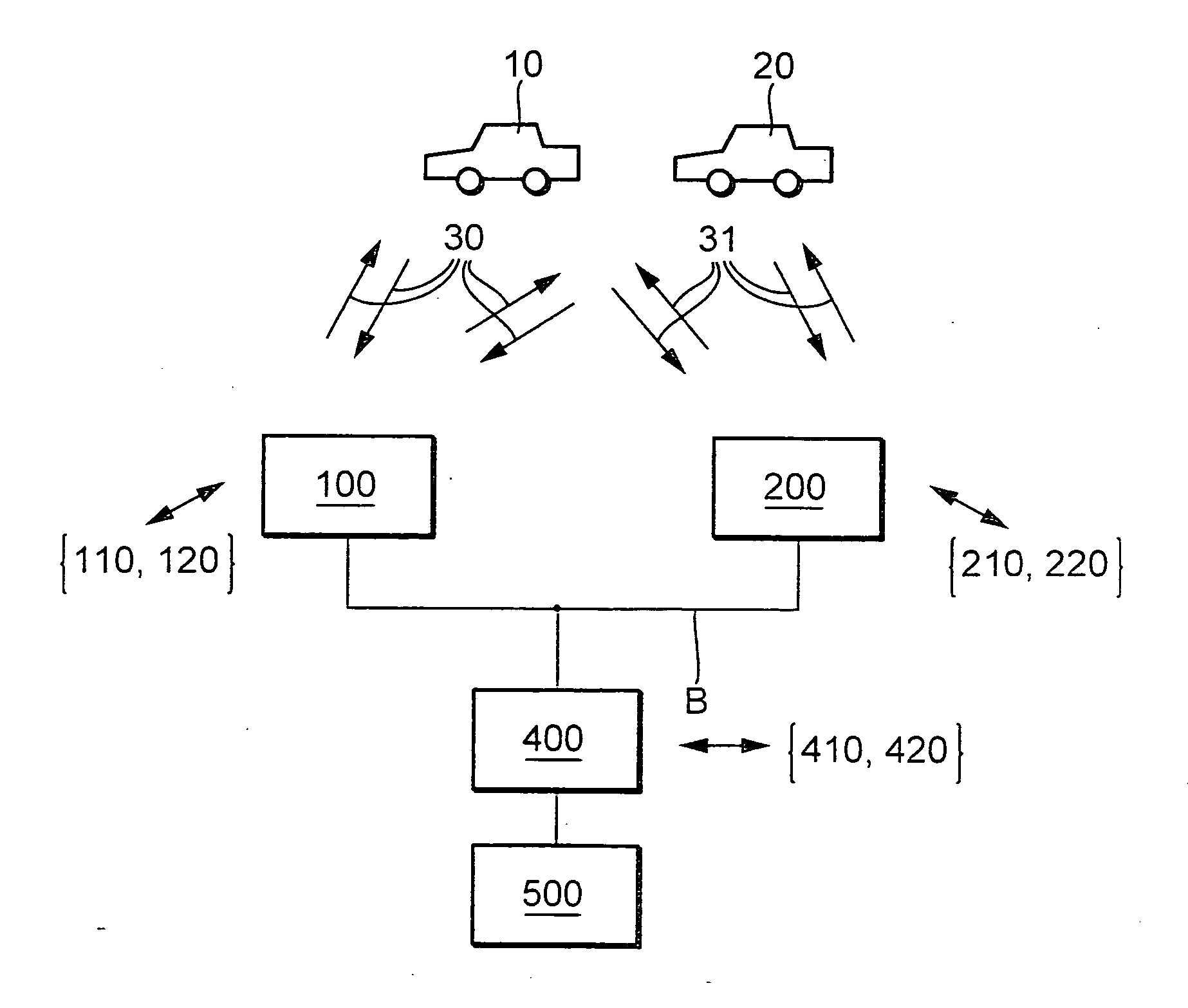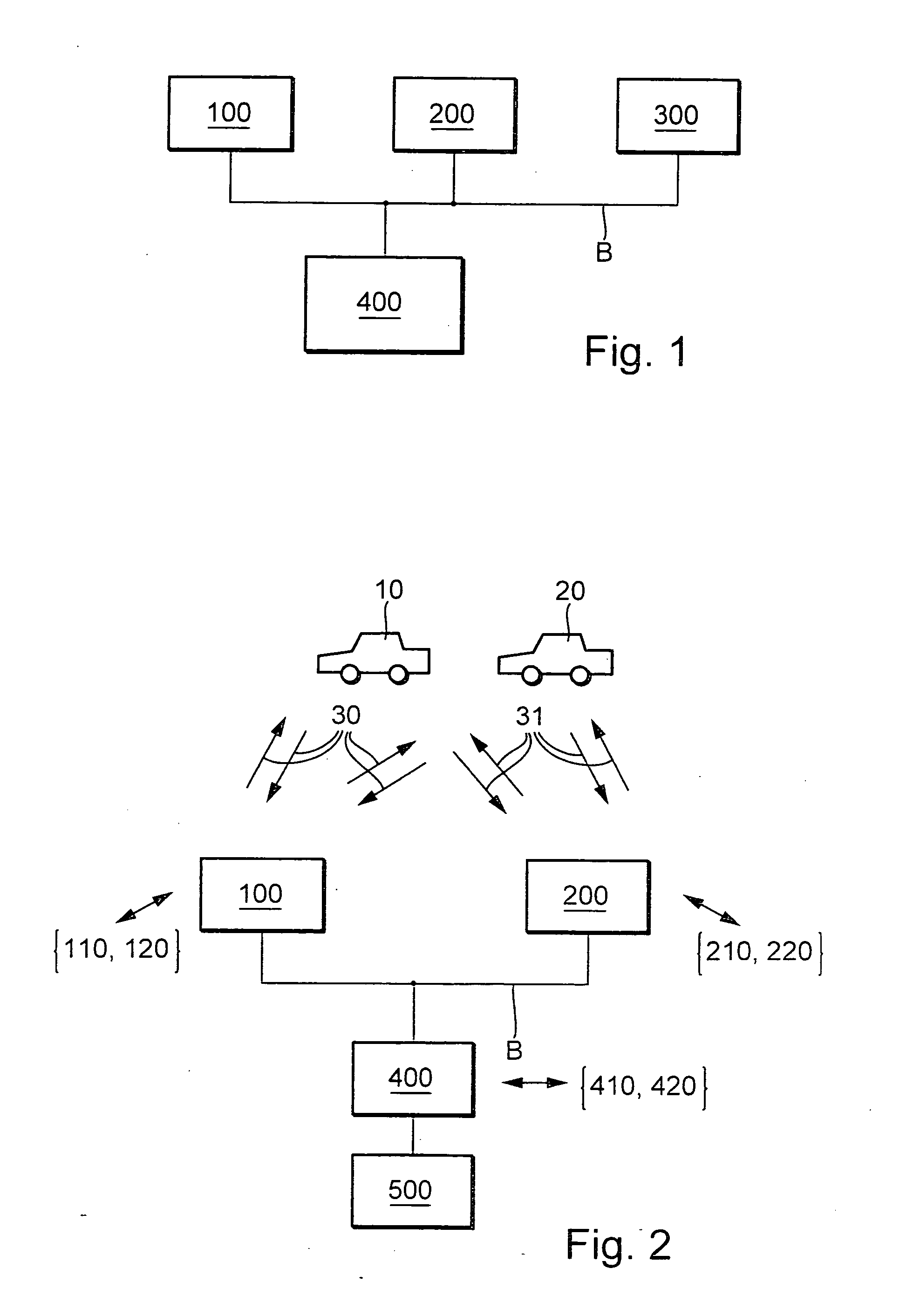Method and device for data exchange and processing
a data exchange and data technology, applied in the field of data exchange and processing, can solve the problems of inability to exchange information between various environmental sensors and a common processing of sensor data of different origins, and achieve the effect of qualitatively higher value, great efficiency and quick and on average tim
- Summary
- Abstract
- Description
- Claims
- Application Information
AI Technical Summary
Benefits of technology
Problems solved by technology
Method used
Image
Examples
Embodiment Construction
FIG. 1 shows a system for processing sensor data. As a rule, the system includes a plurality of sensors, for example, a first sensor 100 shown in FIG. 1, a second sensor 200 and a third sensor 300. Each of the sensors 100, 200, 300 is connected to a bus system, which is marked with reference symbol B. Bus system B is further connected to a processing unit 400. Bus system B is supposed to make sure that the exchange of data between each of sensors 100, 200, 300 and processing unit 400 is ensured, or rather that it is simple and quick to carry out, and that a certain bandwidth for data exchange is available bidirectionally.
According to the present invention, bus system B is particularly provided as a CAN bus (controller area network bus). However, according to the present invention it is also possible to use any other bus architecture.
Processing unit 400, according to the present invention, is particularly denoted as sensor data fusion unit 400, or as information platform 400. In t...
PUM
 Login to View More
Login to View More Abstract
Description
Claims
Application Information
 Login to View More
Login to View More - R&D
- Intellectual Property
- Life Sciences
- Materials
- Tech Scout
- Unparalleled Data Quality
- Higher Quality Content
- 60% Fewer Hallucinations
Browse by: Latest US Patents, China's latest patents, Technical Efficacy Thesaurus, Application Domain, Technology Topic, Popular Technical Reports.
© 2025 PatSnap. All rights reserved.Legal|Privacy policy|Modern Slavery Act Transparency Statement|Sitemap|About US| Contact US: help@patsnap.com



